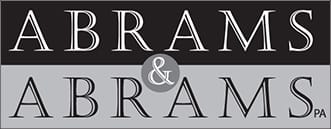Deposing The Expert
By Douglas B. Abrams
I. Introduction
In most cases, perhaps the most critical part of a civil case involving expert testimony is when the adverse expert is deposed. More cases are won and lost at this stage than any other stage. This paper will focus on ways to approach taking the expert’s deposition. The paper will not address the nuances of the legal issues related to experts; but instead will focus on practical considerations.
II. To Depose Or Not Depose An Expert Witness
The first consideration in deposing an expert witness is whether to depose the expert in the first instance. There are experts who probably should not be deposed. If it is clear than an expert has not completed his or her work in the case, deposing the expert may be an exercise in futility. Moreover, if the expert has previously testified in similar cases, deposing the expert may merely point out the weaknesses of the expert’s proposed testimony.
III. Preparation Prior To Deposing An Expert
A scheduling order is one of the most effective tools for establishing ground rules prior to taking the expert’s deposition. Many expert witnesses wait until the week before trial to begin the formulation of their expert opinions. However, with a scheduling order, the plaintiff’s lawyer can preclude the inevitable late-breaking opinion. In motor vehicle cases involving expert testimony or potential expert testimony, the creation of a time/distance chart is essential. With a time/distance chart or matrix, one can determine the sequence of events. For example, in cases involving collisions, the vehicles have inarguably collided. By using a time/distance chart, the lawyer can determine whether or not the speeds of the vehicles as reported by witnesses were consistent with known physical facts.
1. Vehicle Wreck Cases
In the end the key to a vehicle wreck is the combination of time/distance studies and perception/reaction time. The physical characteristics of the roadway are also essential. The expert witness must rely upon facts in evidence in order to be able to testify. Therefore, where an expert assumes facts that are not supported by the evidence, the testimony is inadmissible. In vehicle wreck cases, it is essential to gather the testimony of eyewitnesses and physical facts from the roadway itself. A check-off list prior to deposing the expert may include the following although not all are applicable to every case:
(a) STATEMENT OF WITNESSES
(b) PHOTOGRAPHS OF ROADWAY
(c) DIAGRAMS OF ROADWAY
(d) AERIAL PHOTOGRAPHS
(e) PHOTOGRAPHS OF VEHICLES
(f) SCALED MODELS OF VEHICLES INVOLVED
(g) TIME DISTANCE CHART/MATRIX
(h) CRUSH ANALYSIS
(i) WRECK REPORT
(j) PHOTOGRAPHS AND VIDEOTAPES BY POLICE OFFICERS OR RESCUE SQUAD
(k) ANIMATION OF WRECK
(l) PHOTOGRAPHS MODELLING THE WRECK
(m) SCALED MODEL OF WRECK SCENE
(n) VISIBILITY STUDIES
(o) PRIOR DRIVING RECORD OF DEFENDANT
(p) PRIOR DEPOSITIONS OF EXPERT
(q) EXPERT’S FILE IN ADVANCE OF DEPOSITION
(r) EXPERT’S CV IN ADVANCE OF DEPOSITION
(s) INTERNET SEARCH OF EXPERT’S HOMEPAGE OR WRITINGS
2. Neuropsychological Testimony
(a) PRIOR PAPERS
(b) RESEARCH IN THE AREA
(c) CONCESSION THAT PERMANENT INJURIES CAN OCCUR WITHOUT LOSS OF CONSCIOUSNESS
(d) THE ROLE OF FRIENDS AND FAMILY IN OBSERVING CHANGES
(e) THE ROLE OF POST TRAUMATIC STRESS DISORDER IN CONTRIBUTING TO PROBLEMS RECOVERING FROM A HEAD INJURY
(f) SUSCEPTIBILITY OF THE BRAIN TO HEAD INJURY
(g) TEACHING MATERIALS THAT THE EXPERT USES FOR HIS OR HER PATIENTS
(h) TYPES OF TESTS ADMINISTERED
(i) PRIOR TESTIMONY
(j) PRIOR TEST RESULTS AND EMPLOYMENT RECORDS AS REFLECTING LEVEL OF FUNCTIONING
(k) SMALL INJURY TO BRAIN CAN RESULT IN DRAMATIC DECREASE IN LEVEL OF FUNCTIONING
IV. Expert Testimony After Daubert And Kuhmo Tire
In Daubert v. Merrell Dow Pharmaceuticals, Inc. and Kuhmo Tire Company v. Carmichael, the United States Supreme Court has significantly changed the role of the trial court with respect to expert testimony. In both cases, the U.S. Supreme Court articulated standards for consideration by the trial court prior to the trial court permitting the testimony of expert witnesses. The Daubert Court articulated four factors which were necessary to consider prior to permitting an expert to testify:
1. Testing;
2. Peer Review
3. Error Rates
4. Acceptability within the relevant scientific community.
Of course, this approach would have prohibited the testimony of Copernicus with respect to the orbit of the planets and instead would have held that the Earth was the center of the universe as far as the Courts are concerned. In Kuhmo Tire, the U.S. Supreme Court proclaimed that the Daubert test was applicable to accident reconstructionists. Thus, according to the Kuhmo Court, the same standards of gate-keeping by the trial court applies in scientific and engineering testimony.
These cases therefore are very significant in terms of preparation for cross-examining experts. These cases require close and detailed reading; however, in cross-examination, the purported expert should be asked to expound on how far out “on the cutting edge” his or her research is. In fact, many experts who have adopted fringe opinions may well be disqualified from testimony under these cases. Similarly, where the expert has failed to conduct meaningful testing to support the opinion, the failure to test is a consideration by the trial court in whether to permit the testimony of the expert in the first instance.
